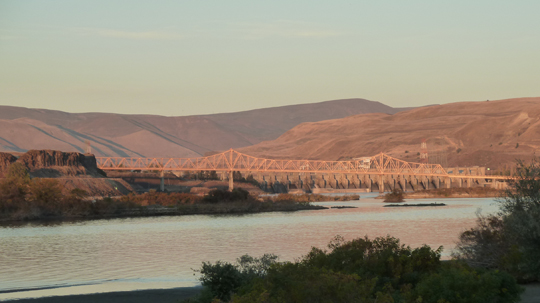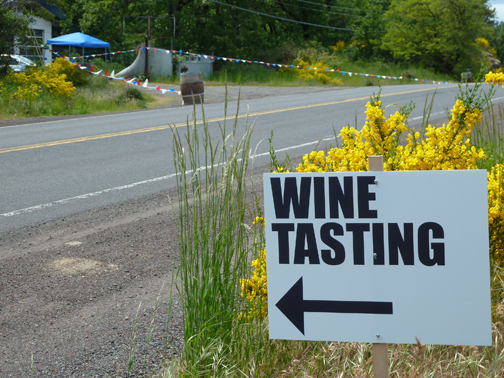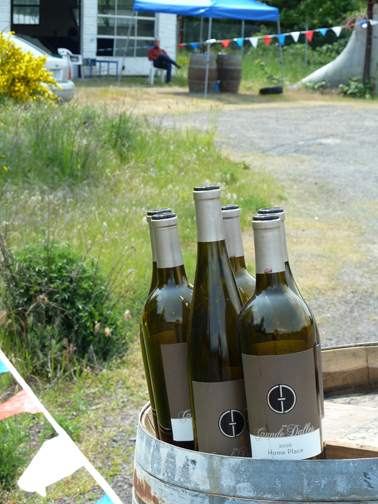Can’t believe it’s been two years since I started writing this blog, when I had a heck of a lot more time because Sam went to bed at 5:30 and STILL NAPPED! And I had a very reliable gal who came over 2x a week besides. Now my posts are a little hurried, I know — kid is growing and changing every day, and my last gal was too Portlandia, causing me to lose faith in good help for now. So there you go.
There are a lot of little gems from the days back, and I’d like to dig up a few, because they’re still relevant, and they give me some breathing room while Sam and I start “crafting” things for the holidays.
The following was posted December 22, 2009
A TRUE WESTERN TOWN, A TRUE SENSE OF PLACE
Hooray! The Dalles has been named a “True Western Town” in True West Magazine’s top 10 list of, you guessed it, “True Western Towns” for 2010.
I’ve always had the feeling, from the first time we showed up and actually spent some time in The Dalles looking for vineyard ground—instead of simply rumbling by on 84 as I imagine most do, because honestly, from a car window, The Dalles kind of shows its ass to the world and who would want to stop? The auto repair and RV spots, the strip malls and former old rundown Aluminum factory site now razed to a bunch of bare earth…and that’s probably enough said*—that it was, at its soul, a quiet, Western town.
And it is: at its center you’ll find restored, 19th century Victorians; one-way down-town streets lined with high-windowed brick buildings; farm rigs and big hats going by; cowboy boots and western wear; plus all what the article in True West speaks of. And all against the backdrop of enormous, grassy hills that echo Connemara to me—or pictures I’ve seen of New Zealand—on the Washington side, and heights of basalt outcroppings with scrub oak and sage on the Oregon side; the Western character is hard to miss.
Once our vineyard was planted, it felt like—and still does—a little vineyard on the frontier, all alone under the watchful eye of Mt. Hood in that striking expanse of rolling hills of wheat, the Klickitats just across the river, the hawks and kestrels soaring against the blue, blue sky. The occasional truck or car zipping down Emerson Loop Road can’t even wake me from this reverie, so few are there.
From people I’ve talked with, not many know about The Dalles, few know even less about the geographic Big West that’s just past the bend in the Columbia River heading eastward out of “The Hood,” or Hood River (I call it The Hood—don’t know if others do). How dramatically the landscape changes; away from the rain influence of the Cascade Range where the average precipitation reaches 75 inches—The Hood approximately 32—the verdure of the densely forested, canyon-walled-passage drive from Portland is replaced by a set out of a Leone western, with open, golden—sensuous even—rolling steppes, rim-rock rises and scrub-oak gullies where I imagine a young, poncho-ed Clint resting, or, more likely, on the run (ah, Clint); for every mile you drive east from The Hood you lose an inch of precipitation, and in this area, in the rain shadow of Mt.Hood, a scant 14 inches of precipitation is the yearly norm. Lewis Mumford, an early 20th century philosopher of the urban landscape (among other areas) eloquently describes the Columbia Gorge’s scenic transition in 1939 as “[unrolling] itself like some great kakemono of classic Chinese landscape art.”
I don’t subscribe to True West, but the categories of “Renegade Roads,” “Classic Gunfights,” and “Frontier Fare” from its website pique my interest in becoming a regular reader. I hope what might be more inviting to you, my dear Reader, if you haven’t been, or if you don’t know, is The Dalles and surrounding area itself. It quietly sits like an undiscovered gem, only seen by the more discerning eye who relishes the new, for the individual who is not afraid to step off the beaten path and find their own island of quiet, while the rest of the world rushes loudly past. A true Western town with a true Western sense of place.
*update: Google’s shiny power station and the area’s funkelnagelneu grain elevator stand out like beacons near that old aluminium factory site, hopefully heralding in more bright things to come.




